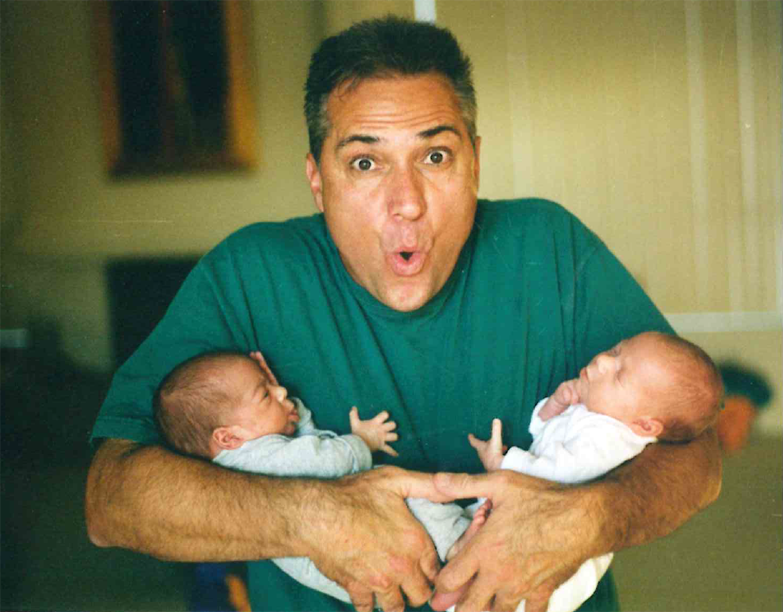Are Twins More Common after Vasectomy Reversals?
This article on twins after vas reversals is written by Matthew B.F. Marks, MS, TS (ABB), of Arizona Andrology Lab and Cryobank, for the ICVR website, updated in 2023.
Couples frequently ask Dr. Marks, Dr. Burrows and our senior andrologist, Matthew, “is there an increased chance of having twins after a vasectomy reversal?” Since we are not manipulating hormones or implanting multiple embryos (as with IVF) and we are simply restoring the natural flow of sperm to the semen as it was designed for natural conception, twins after vasectomy reversals occur at the same low rate as with natural conception for a couple. In other words, there is not an increased rate of twins after a vas reversal.
Matthew Marks, our full time, in-house senior andrologist with Arizona Andrology Lab and Cryobank (he has a Masters in Andrology), explains the scientific aspect of twins and twinning.
There two different processes that can result in the birth of twins (Hall JG. Twinning. Lancet. 2003 Aug 30;362(9385):735-43). Identical (monozygotic) twinning gives rise to genetically identical siblings whereas fraternal (dizygotic) twinning results in genetically unique, or “fraternal” twins. In both cases the offspring are conceived at the same time, share the same uterus and develop at approximately the same rate and will be birthed one after another in the same period of labor.
Identical twins are created when a single sperm fertilizes a single egg and the embryo, as it grows, then divides into two separate embryos that then grow into two identical children.
Fraternal twins are created when two eggs are each fertilized by a single, independent sperm. Twins can grow in the same placenta, or amniotic sac, or they can grow in a their own separate placenta.
Fraternal twinning can be genetically inherited (where people often hear of twins running in the family) whereas identical twinning is a naturally occurring random process.
Identical twins share the same genetics and thus the same basic traits and appearance, such as hair color, eye color, or stature. Fraternal twins are each unique genetic pairings, developing from the fusion of different sperm and eggs, and are thus are similar to any siblings besides having shared a womb. They are two totally different people. A male and female set of twins is always fraternal.
Twin rates double in mothers that are over 35 years of age. The twin rate also varies on ethnicity and its prevalence rates vary across different populations.
The overall rate for having a set of identical twins is 3 in 1,000 births and the overall rate of having a set of fraternal twins is 33 in 1,000 births (1).
Vasectomy reversal has no effect on twin rates, as this simply restores the flow of sperm to the semen (2).
Hormonal stimulation used in fertility treatments and the transferring of multiple embryos during in-vitro fertilization (IVF) increases the incidence and probability of birthing twins, triplets or more (3).
If there are any questions about a precision microsurgical vas reversal or when couples want to set up a no-charge consultation with either of the two urologic microsurgeons here at ICVR, by phone, in office, Zoom or Face Time, please contact us at (888) 722-2929 .
This page was reviewed, edited and updated January 1, 2023, by Sheldon F. Marks, MD.
References:
1.McNamara HC, Kane SC, Craig JM, Short RV, Umstad MP. A review of the mechanisms and evidence for typical and atypical twinning. Am J Obstet Gynecol. 2016 Feb;214(2):172-191.
2.Nalesnik JG, Sabanegh ES Jr. Vasovasostomy: multiple children and long-term pregnancy rates. Curr Surg. 2003 May-Jun;60(3):348-50.
3.Kulkarni AD, Jamieson DJ, Jones HW, Jr, Kissin DM, Gallo MF, Macaluso M, Adashi EY. Fertility treatments and multiple births in the United States. N Engl J Med. 2013;369(23):2218–2225.

